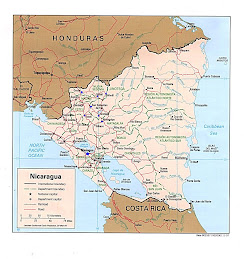Today, we finally finished a project on which we have been working for the past two weeks. Douglass had asked if we knew how to calculate the air conditioning load for a building, and although neither of us had ever done so for an actual structure, we were dying for some work, and knew that our Thermodynamics teacher would kill both of us if we couldn't figure it out. So, being engineers, and thus loath to actually do any math by hand (and because we frankly don't know how to do any of the calculations for this by hand), we searched around on the internet until we found a few programs that looked like they might do the trick. We then went to the building, and realized that it was still only in the construction phase. When we arrived, workers were halfway done installing the corrugated tin roof, one of the new additions to the pre-existing concrete walls of the old structure. We gathered what data we could, using a pool thermometer as a thermocouple, and my notebook as a ruler. At this point, we're using an estimate that Jim came up with using a very simple program that he used to analyze the building room by room. It's incredibly simplistic, and I fear not very accurate, as it doesnt take into account weather trends, user behavioral patterns, and a million other factors. I attempted to use two different pieces of complex software that do take these things into consideration, but they were too geared toward an "American" standard of construction, requiring far too much input data that frankly, no-one has. Jim's estimate should be fine, as it is very conservative, and looks at the building in a worst case scenario. The people who are going to be using the building want to use solar absorption chillers to air condition the building. As far as I can tell, these operate on the same principle as heat pumps, or other absorption chillers except that instead of getting their thermal energy from the combustion of fossil fuels, they utilize water heated by the sun. After some research, I've found that this technology is incredibly interesting, because on principle, one of these systems could air condition a house using little to no electricity at all. Of course, there's a high startup cost.
Beyond this, Jim and I are going to meet some of the people from Sabana Grande in Leon tomorrow, and we're going to spend the day looking around the city, and then come back Sunday morning.
Next Tuesday, we are going to be shipping out on the first round of EU installations to the Northeast, which will mean that I'll be gone for about two weeks. This is kind of a daunting concept, but I'm rather excited to go get my hands on something after spending all this time at a computer. The Northeast is apparently the most rugged area of Nicaragua, and is often referred to as "The Mosquito Region". This is the area where Malaria exists, there's no Malaria in Managua or the southwest, only Dengue. I've heard some other stories, but I'm not going to say anything about that until I get back. I'd like to provide my own account of things. We may not have hotel access, so Jim and I are seriously considering purchasing a tent in the local supermarket for $30. Its either that or sleep in a sleeping bag, wrapped in a mosquito net. I'm pretty excited!

No comments:
Post a Comment